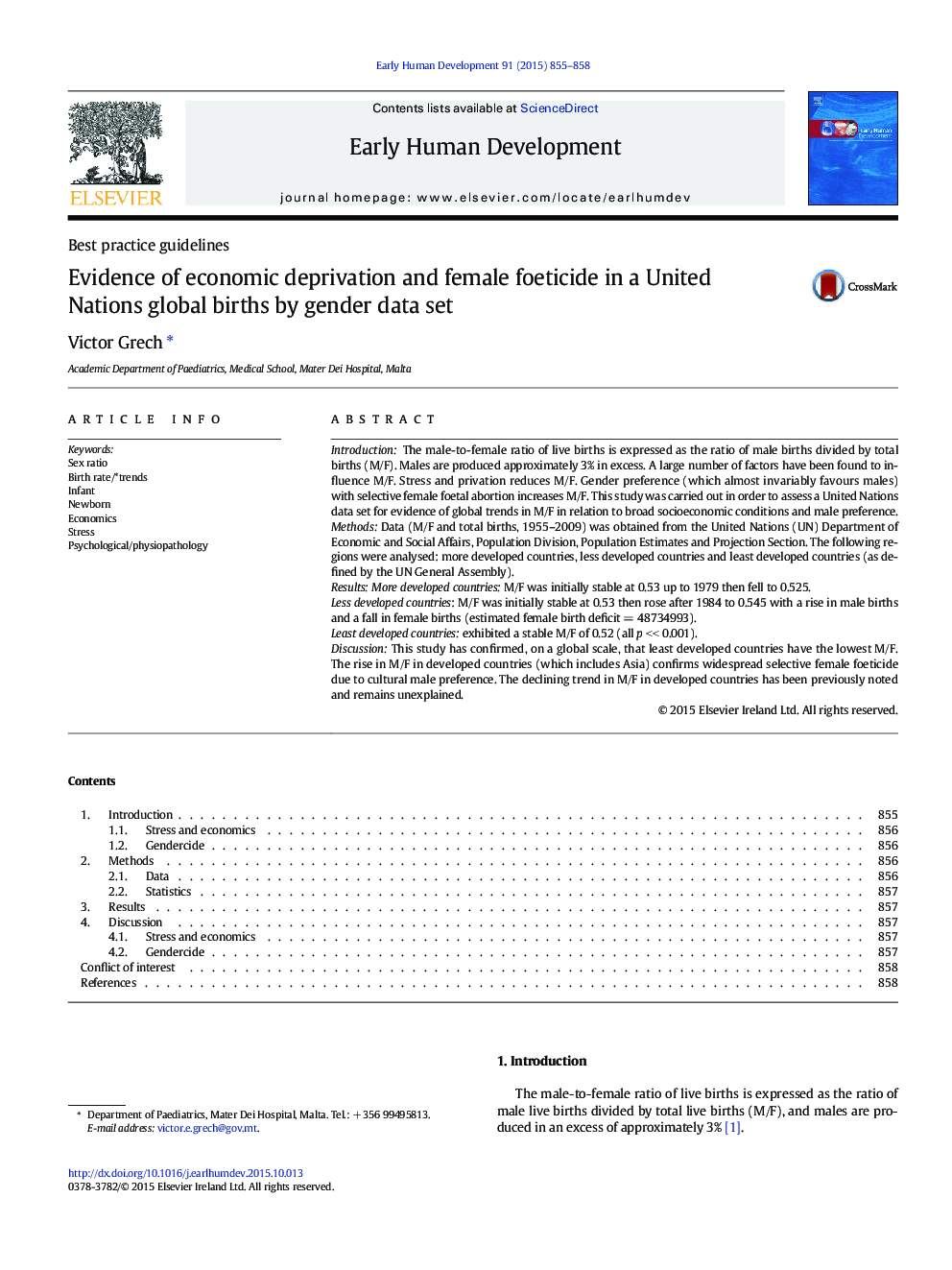| Article ID | Journal | Published Year | Pages | File Type |
|---|---|---|---|---|
| 3916729 | Early Human Development | 2015 | 4 Pages |
IntroductionThe male-to-female ratio of live births is expressed as the ratio of male births divided by total births (M/F). Males are produced approximately 3% in excess. A large number of factors have been found to influence M/F. Stress and privation reduces M/F. Gender preference (which almost invariably favours males) with selective female foetal abortion increases M/F. This study was carried out in order to assess a United Nations data set for evidence of global trends in M/F in relation to broad socioeconomic conditions and male preference.MethodsData (M/F and total births, 1955–2009) was obtained from the United Nations (UN) Department of Economic and Social Affairs, Population Division, Population Estimates and Projection Section. The following regions were analysed: more developed countries, less developed countries and least developed countries (as defined by the UN General Assembly).ResultsMore developed countries: M/F was initially stable at 0.53 up to 1979 then fell to 0.525.Less developed countries: M/F was initially stable at 0.53 then rose after 1984 to 0.545 with a rise in male births and a fall in female births (estimated female birth deficit = 48734993).Least developed countries: exhibited a stable M/F of 0.52 (all p << 0.001).DiscussionThis study has confirmed, on a global scale, that least developed countries have the lowest M/F. The rise in M/F in developed countries (which includes Asia) confirms widespread selective female foeticide due to cultural male preference. The declining trend in M/F in developed countries has been previously noted and remains unexplained.
